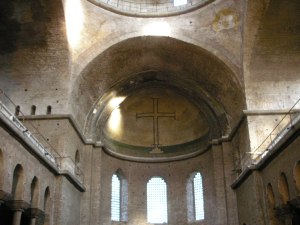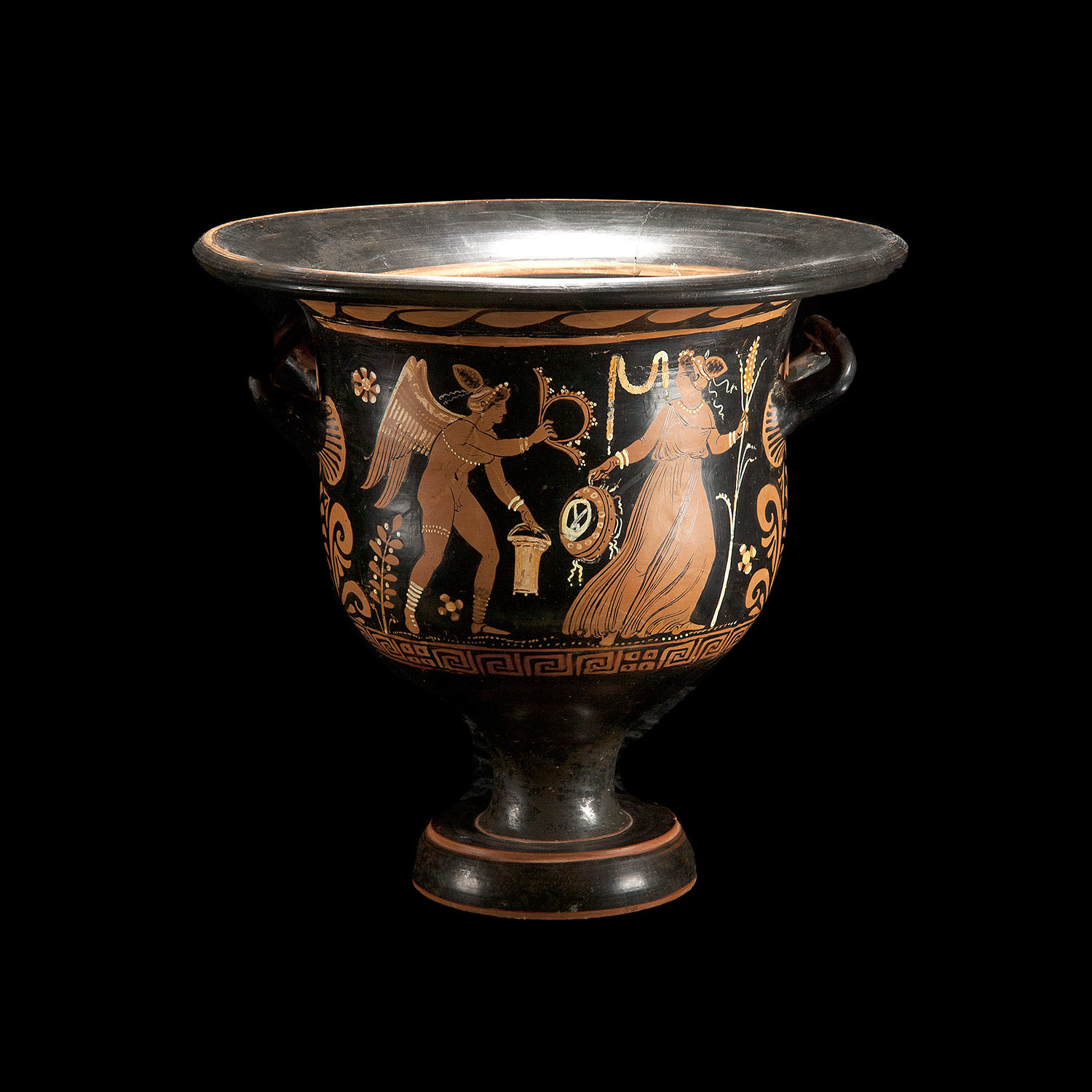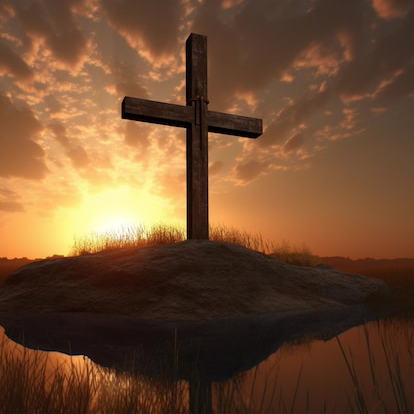jBird
Member
- Jan 26, 2015
- 46
- 2
I'm not sure if this is the correct forum or not but I wrote up an outline of the history of images and how they found their way into the Christian church. I ask the moderators to move this thread if it is in the wrong forum.
Thank you.
jBird
Once in a while I receive questions through my blog.
Here is one:
"do you think they (icons and images) can be helpful for the faithful to enter into more pious prayer?"
My answer:
The only aspiration for the Christian should be to exalt the Gospel, the free grace of God in salvation and declare this salvation through Jesus Christ alone. This was the practice of the early church before the so-called ‘Triumph of Orthodoxy.’ To enter into ‘more pious prayer’ we need to recognize our sinfulness and hopelessness for it is here that we experience God’s forgiveness and mercy. When we understand our helplessness in all our trials and earthly trouble we find Jesus Christ sweet, altogether lovely and our prayer is most pious (devout, dutiful, etc).
The better question is why not allow the revealed word of God to direct our worship? Baptists believe the Bible should dictate how Christians are to worship. When we deviate from scripture we invite superstition and idolatry into our church practices. Sacred and profane history has taught us that man manufactures idols out of the desires of his heart all of the time. The righteous man will make an idol of his righteousness and the religionist crafts an idol of his ceremony. To be pious and devout requires us to look to Christ and Him alone for all things.
I hope that helps.
________________________________________________
The question caused me to dig deeper into how the church allowed images and icons into the church. Here is what I found.
The discussion begins with the Iconoclast Controversy or the Controversy Over Images that took place between 680 and 850ad. For almost 200 years the Greek State church argued over the use of images, specifically Icons and their purpose in the church...if they had any purpose at all. Many Western Christians are not familiar with this debate, at least not in detail, so I hope to give a very brief outline highlighting a few of the more interesting facts. Make no bones about it, I am unable to find any scriptural reason for the use of images, so the best I can try to do is be honest with the particulars as I have come to understand them.
The debate took place between what modern historians call Iconoclasts and Iconophiles or those who rejected religious images often resulting in their destruction and those who believe religious images have a place in the Christian religion. This debate seemed bound to happen as the revelation of God in scripture came into contact with Greek culture and religion. The former rejects the use of images of the Divine and the latter wholeheartedly encourages images, statues and the like. Some Christians in both the East and West believed it was acceptable to create representations of Christ and the Trinity but there was also a group of Christians that denied any need for them. The Iconophiles believed icons were useful and even essential to worship while the Iconoclasts believed it was against the second commandment to do so. William R. Cannon points out, “A custom which primitive Christianity looked upon as idolatry was common practice in the eight century. Consequently what in ancient times had been an innovation was considered during this period as tradition.” (page 105)
Diarmaid MacCulloch calls this rub of Hebrew and Greek culture the “fault line” for the old covenant forbids images of God in any sense while Greek paganism encouraged it. A similar debate can be found in the history of the Western church but it has not had the same impact on history as it had in the East. Some historians have suggested the numbering of the Decalogue (the Ten Commandments) might have contributed to the use of statues by Roman Catholics who, following Augustine of Hippo neatly tuck the First and Second Commandment into one and separated the Tenth into Nine and Ten. Lutherans use Augustine’s numbering of the Decalogue and take no issue with images either. I’m not sure if this really effects the views expressed by each group considering the Eastern Orthodox use the same numbering system as the Judaism and Protestantism but it was mentioned a few times by different authors so I mention it here.
When you take a closer look at the details of the “controversy” it soon becomes apparent that matters of theology were passed from the Byzantine Emperor to the Patriarch of Constantinople. If the verdict was contrary to the wishes of the Emperor it was likely the Patriarch would be replaced. This happened more than a few times over the course of Byzantine history. From my reading on the subject it seems Leo (III) the Isaurian, Byzantine Emperor (717 – 741), saw a growing devotion and power ascribed to religious images. He believed this was mere superstition and tried to rid the empire of religious iconography with a series of edicts (726 – 729) forbidding the use of images in worship. Leo the III was not immune to superstition. It seems likely that Leo, having fought Islamic armies, believed that removing of images might lead to military victories. Whatever the reason behind the Controversy and it was always a political issue.
(Hagia Eirene Church, Iconoclast. Notice the lack of adornment. Click on the image to enlarge.)

The Iconophiles found a champion in John of Damascus (645/676 – 749) who offered a polemic for the use of images. Cannon describes John as one of the few strong theologians of the 8th century, not in the same class as Augustine of Hippo, but without equal in the West for the time period. Using a philosophical framework of categories and causes borrowed from Aristotle John of Damascus argued the Second Commandment was abrogated by the Incarnation of Christ. “If one accepted this vocabulary and Aristotelian framework, then devotion to visual images in Christianity was safe.” (MacCulloch, page 448) The Greek church essentially changed the language which framed the debate over images from art to theology. Skipping ahead the matter came to close as Irene of Athens, former regent and now Empress after having her sons blinded and imprisoned, assumed the throne. She was in favour of Icons and had a layman who was also in favour of Icons consecrated Patriarch. Patriarch Tarasios, with help from the State, held what was deemed an “Ecumenical Conclave” in 787 or what is often called the Second Council of Nicaea which effectively restored the use of images in worship. Some further political proclamations against Icons were made but Empress Theodora (843) restored again the use of images in worship. This last proclamation of the State church “effectively closed down the possibility of alternative forms of worship in Orthodox tradition.” (McCulloch, page 452)
It soon becomes apparent the debate was heated and very political. Icons and other images had a cult following that garnered the support of the State. Ultimately it wasn’t the Bible that settled the issue for the church but two Empresses backing the Iconophiles. The idea that you could reach God through images is foreign to scripture. God “calls us back and withdraws us from petty carnal observances, which our stupid minds, crassly conceiving of God, are wont to devise.” (Calvin) Some are quick to point to the Second Council of Nicaea as a historical point of reference but we cannot forget the polemics against the use of images that predate the Reformation such as the works of Claudius of Turin, the Council of Frankfurt and Libri Carolini. With the Reformers cry of “scripture alone” and “all of scripture” the debate was reopened in the West during the Reformation. John Calvin is masterful in the Institutes on this subject and I have quoted pertinent sections below for your further reading. He rightly calls Empress Irene “a wicked Proserpine named Irene” in his French edition.
Yours in the Lord,
jBird
Thank you.
jBird
Once in a while I receive questions through my blog.
Here is one:
"do you think they (icons and images) can be helpful for the faithful to enter into more pious prayer?"
My answer:
The only aspiration for the Christian should be to exalt the Gospel, the free grace of God in salvation and declare this salvation through Jesus Christ alone. This was the practice of the early church before the so-called ‘Triumph of Orthodoxy.’ To enter into ‘more pious prayer’ we need to recognize our sinfulness and hopelessness for it is here that we experience God’s forgiveness and mercy. When we understand our helplessness in all our trials and earthly trouble we find Jesus Christ sweet, altogether lovely and our prayer is most pious (devout, dutiful, etc).
The better question is why not allow the revealed word of God to direct our worship? Baptists believe the Bible should dictate how Christians are to worship. When we deviate from scripture we invite superstition and idolatry into our church practices. Sacred and profane history has taught us that man manufactures idols out of the desires of his heart all of the time. The righteous man will make an idol of his righteousness and the religionist crafts an idol of his ceremony. To be pious and devout requires us to look to Christ and Him alone for all things.
I hope that helps.
________________________________________________
The question caused me to dig deeper into how the church allowed images and icons into the church. Here is what I found.
The discussion begins with the Iconoclast Controversy or the Controversy Over Images that took place between 680 and 850ad. For almost 200 years the Greek State church argued over the use of images, specifically Icons and their purpose in the church...if they had any purpose at all. Many Western Christians are not familiar with this debate, at least not in detail, so I hope to give a very brief outline highlighting a few of the more interesting facts. Make no bones about it, I am unable to find any scriptural reason for the use of images, so the best I can try to do is be honest with the particulars as I have come to understand them.
The debate took place between what modern historians call Iconoclasts and Iconophiles or those who rejected religious images often resulting in their destruction and those who believe religious images have a place in the Christian religion. This debate seemed bound to happen as the revelation of God in scripture came into contact with Greek culture and religion. The former rejects the use of images of the Divine and the latter wholeheartedly encourages images, statues and the like. Some Christians in both the East and West believed it was acceptable to create representations of Christ and the Trinity but there was also a group of Christians that denied any need for them. The Iconophiles believed icons were useful and even essential to worship while the Iconoclasts believed it was against the second commandment to do so. William R. Cannon points out, “A custom which primitive Christianity looked upon as idolatry was common practice in the eight century. Consequently what in ancient times had been an innovation was considered during this period as tradition.” (page 105)
Diarmaid MacCulloch calls this rub of Hebrew and Greek culture the “fault line” for the old covenant forbids images of God in any sense while Greek paganism encouraged it. A similar debate can be found in the history of the Western church but it has not had the same impact on history as it had in the East. Some historians have suggested the numbering of the Decalogue (the Ten Commandments) might have contributed to the use of statues by Roman Catholics who, following Augustine of Hippo neatly tuck the First and Second Commandment into one and separated the Tenth into Nine and Ten. Lutherans use Augustine’s numbering of the Decalogue and take no issue with images either. I’m not sure if this really effects the views expressed by each group considering the Eastern Orthodox use the same numbering system as the Judaism and Protestantism but it was mentioned a few times by different authors so I mention it here.
When you take a closer look at the details of the “controversy” it soon becomes apparent that matters of theology were passed from the Byzantine Emperor to the Patriarch of Constantinople. If the verdict was contrary to the wishes of the Emperor it was likely the Patriarch would be replaced. This happened more than a few times over the course of Byzantine history. From my reading on the subject it seems Leo (III) the Isaurian, Byzantine Emperor (717 – 741), saw a growing devotion and power ascribed to religious images. He believed this was mere superstition and tried to rid the empire of religious iconography with a series of edicts (726 – 729) forbidding the use of images in worship. Leo the III was not immune to superstition. It seems likely that Leo, having fought Islamic armies, believed that removing of images might lead to military victories. Whatever the reason behind the Controversy and it was always a political issue.
(Hagia Eirene Church, Iconoclast. Notice the lack of adornment. Click on the image to enlarge.)

The Iconophiles found a champion in John of Damascus (645/676 – 749) who offered a polemic for the use of images. Cannon describes John as one of the few strong theologians of the 8th century, not in the same class as Augustine of Hippo, but without equal in the West for the time period. Using a philosophical framework of categories and causes borrowed from Aristotle John of Damascus argued the Second Commandment was abrogated by the Incarnation of Christ. “If one accepted this vocabulary and Aristotelian framework, then devotion to visual images in Christianity was safe.” (MacCulloch, page 448) The Greek church essentially changed the language which framed the debate over images from art to theology. Skipping ahead the matter came to close as Irene of Athens, former regent and now Empress after having her sons blinded and imprisoned, assumed the throne. She was in favour of Icons and had a layman who was also in favour of Icons consecrated Patriarch. Patriarch Tarasios, with help from the State, held what was deemed an “Ecumenical Conclave” in 787 or what is often called the Second Council of Nicaea which effectively restored the use of images in worship. Some further political proclamations against Icons were made but Empress Theodora (843) restored again the use of images in worship. This last proclamation of the State church “effectively closed down the possibility of alternative forms of worship in Orthodox tradition.” (McCulloch, page 452)
It soon becomes apparent the debate was heated and very political. Icons and other images had a cult following that garnered the support of the State. Ultimately it wasn’t the Bible that settled the issue for the church but two Empresses backing the Iconophiles. The idea that you could reach God through images is foreign to scripture. God “calls us back and withdraws us from petty carnal observances, which our stupid minds, crassly conceiving of God, are wont to devise.” (Calvin) Some are quick to point to the Second Council of Nicaea as a historical point of reference but we cannot forget the polemics against the use of images that predate the Reformation such as the works of Claudius of Turin, the Council of Frankfurt and Libri Carolini. With the Reformers cry of “scripture alone” and “all of scripture” the debate was reopened in the West during the Reformation. John Calvin is masterful in the Institutes on this subject and I have quoted pertinent sections below for your further reading. He rightly calls Empress Irene “a wicked Proserpine named Irene” in his French edition.
Yours in the Lord,
jBird
Last edited:








